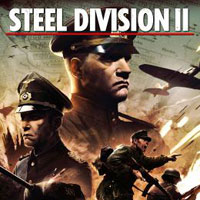Steel Division 2: Introduction Allied divisions
The Allied faction in Steel Division 2 is composed mainly of Russian divisions. The Soviet Union has a variety of equipment at its disposal, but it's mainly based on sending large numbers of troops to enemy positions. Although the basic doctrine of the Soviet divisions is quantity, a large number of battle groups have modern equipment, which may cause trouble to best Axis units. To a greater extent, Russian Battle Groups rely on a mixture of very weak and powerful units, such as Strelk's Light Infantry Troops and Experienced Guards or hordes of T-34 tanks, and vehicles with supplies of equipment received from their British and American allies under the Land-Lease Agreement.
The strength of Russian divisions, especially the armored ones, lies in the tanks, which in the period presented in Steel Division 2 are beginning to overtake the German war machine, thanks to the economic advantage and better development path of the military industry. T-34/85 tanks have a good armor and, more importantly, a great cannon with good penetration. In turn heavy IS-2 tanks belong to the top units of that time. Similarly, the ISU-152 and Katyusha support and the Br-5 280mm artillery guns are extremely powerful units, which everyone has to take into account. The greatest ailment of almost all Russian divisions are light anti-aircraft units and a mixture of weak and strong units, usually with a low level of experience.
For Back to War DLC owners, the Allies can select several Western Front divisions, including the American 3rd Armored Division and the British 15th Infantry Division. In these battle groups you will find infantry units and combat equipment of little variety compared to Russian divisions. Some of the tanks will be very similar to the equipment of some Russian divisions due to their agreements and purchased vehicles or units from western forces. However, the western Allied states are better at handling such vehicles, which is reflected in the more experienced units available in a larger number.
You are not permitted to copy any image, text or info from this page. This site is not associated with and/or endorsed by the developers and the publishers. All logos and images are copyrighted by their respective owners.
Copyright © 2000 - 2025 Webedia Polska SA for gamepressure.com, unofficial game guides, walkthroughs, secrets, game tips, maps & strategies for top games.
